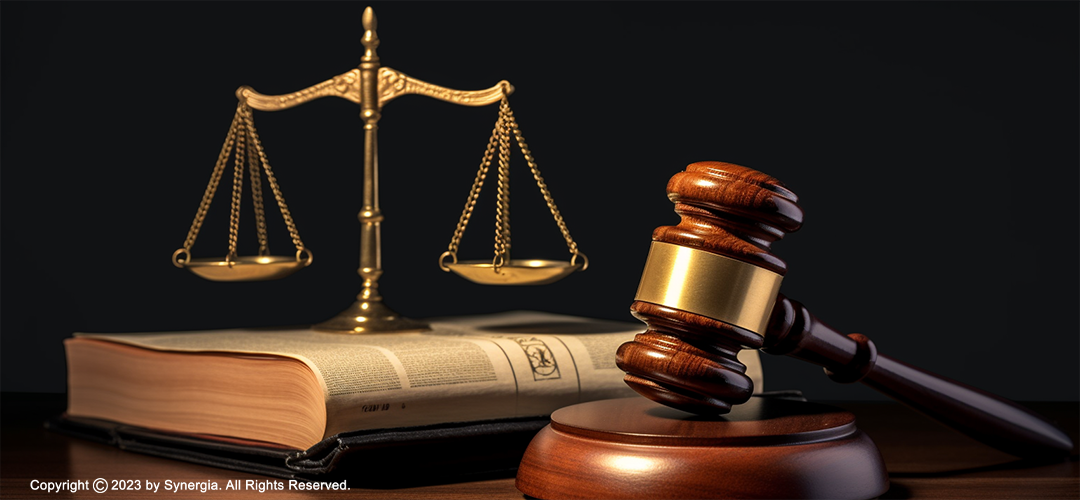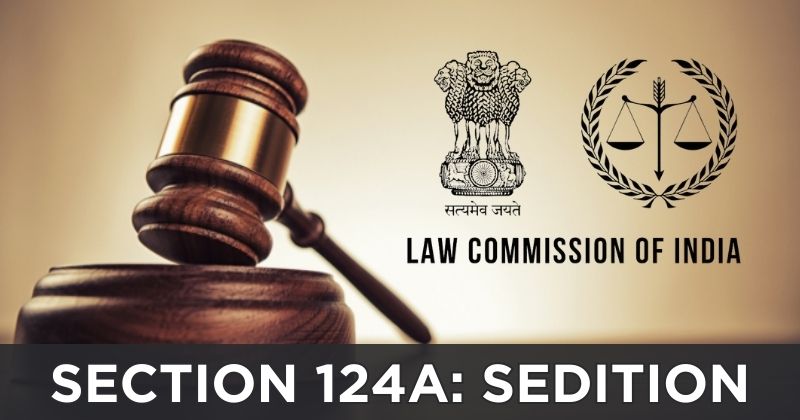Sedition Law: a Denovo Look?
June 9, 2023 | Expert Insights

The Law Commission of India has come out in favour of the contested sedition law, arguing that it should be retained with certain changes. Section 124-A of the Indian Penal Code (IPC), which criminalises sedition, has received much criticism for being used as a tool to suppress dissent and curb freedom of speech and expression. Critics argue that it is a repressive colonial-era law that was used to penalise dissent against the colonial government and continues to be used indiscriminately.
Last year, the Supreme Court passed a landmark order putting the law on hold, asking the government to refrain from registering new sedition cases until it finishes hearing petitions against it. The government suggested that it would review and re-examine the law.
Background
Section 124-A of the IPC defines sedition as “whoever, by words, either spoken or written, or by signs, or by visible representation, or otherwise, brings or attempts to bring into hatred or contempt, or excites or attempts to excite disaffection towards the Government”. It was enacted in 1860 (two years after the 1857-58 Sepoy Revolt or India’s 1st War of Independence) to prevent offences against the state.
The provision was first included in the Draft Indian Penal Code, 1837, by Thomas B. Macaulay when the codification of Indian laws began. The British claimed that it was introduced to account for political conditions in India.
The sedition law was used against freedom fighters such as Bal Gangadhar Tilak and M.K. Gandhi. The most historical case of sedition was when Gandhiji was charged with sedition for his political articles in Young India. Gandhiji pleaded guilty but pointed out that disaffection should not be criminalised as long as it does not promote or incite violence; he maintained that the law couldn’t manufacture affection towards the government.
After independence, the members of the Constituent Assembly debated whether to include sedition in the Constitution as an exception to the right to free speech. However, they decided not to in light of a proposal by KM Munshi, who pointed out the provision's colonial origins and how it had been used to suppress the independence movement. However, it was maintained as a criminal offence in section 124-A.
A significant decision on sedition law was Kedar Nath Singh vs. the State of Bihar, in which the constitutional validity of section 124-A was challenged. The Supreme Court upheld Section 124-A because criminalising sedition was a reasonable restriction on the right to free speech under Article 19(1)(a) of the Constitution. However, the decision made it clear that criticism of the government will not in itself constitute sedition unless it incites or calls for violence. Subsequently, multiple writ petitions have been filed challenging the constitutionality of Section 124-A.

Analysis
In its report, the Law Commission argued that the colonial origins of law are not grounds for its repeal. It also maintained that misuse is not a basis for repealing a law: several laws are misused. It determined that simply because certain countries have repealed their sedition laws does not imply that India should do the same since the prevailing ground realities in India are distinct from other countries.
The sedition law cannot be done away with: it is needed to deal with expressions that incite violence against the government to help ensure the stability of the government and safeguard against secessionist elements. Further, as the Law Commission pointed out in its report if the law is repealed, offences that incite violence against the government would have to be tried under special statutes and counter-terrorism legislation, which are far more stringent than section 124-A.
Instead, it recommended that section 124-A be retained but with certain procedural safeguards to prevent its misuse; an FIR for sedition should be filed only after a preliminary inquiry and with the government's permission. It proposed that a provision similar to Section 196(3) of the Code of Criminal Procedure, 1973 be added as a proviso to Section 124-A to provide the required procedural safeguard. Section 196(3) specifies that when charging a person with offences against the state, the government may order a preliminary investigation by a police officer. However, this would leave the decision with the government and would not safeguard against sedition charges being misused by the government.
Further, procedural safeguards may not be sufficient to address the issue of the law being misused. One of the key drawbacks of the law is that its scope is broad because the definition of sedition is vague. The terms “bring into hatred or contempt” or “attempt to excite disaffection” can be understood in several ways. Criticism of government policy could be interpreted as an attempt to excite disaffection. Due to this, sedition law can be applied indiscriminately and used as a tool to harass citizens who oppose government policies.
The decision in Kedarnath provided a helpful guiding criterion that the expression should incite violence to constitute sedition. The Law Commission suggested that the Central government issue model guidelines for the provision. Such guidelines, along with judicial interpretations of section 124-A, such as Kedarnath, could help clarify the definition of the offence of sedition.
Assessment
- Repealing Section 124A may not be the solution since a law is needed to cover the offence. The government will likely retain the provision given the Law Commission's recommendation.
- However, the sedition law in its current form is broad and vague in its scope, enabling it to be used indiscriminately. Further guidelines could help outline more specific ingredients for the offence and prevent misuse of the law.








Comments